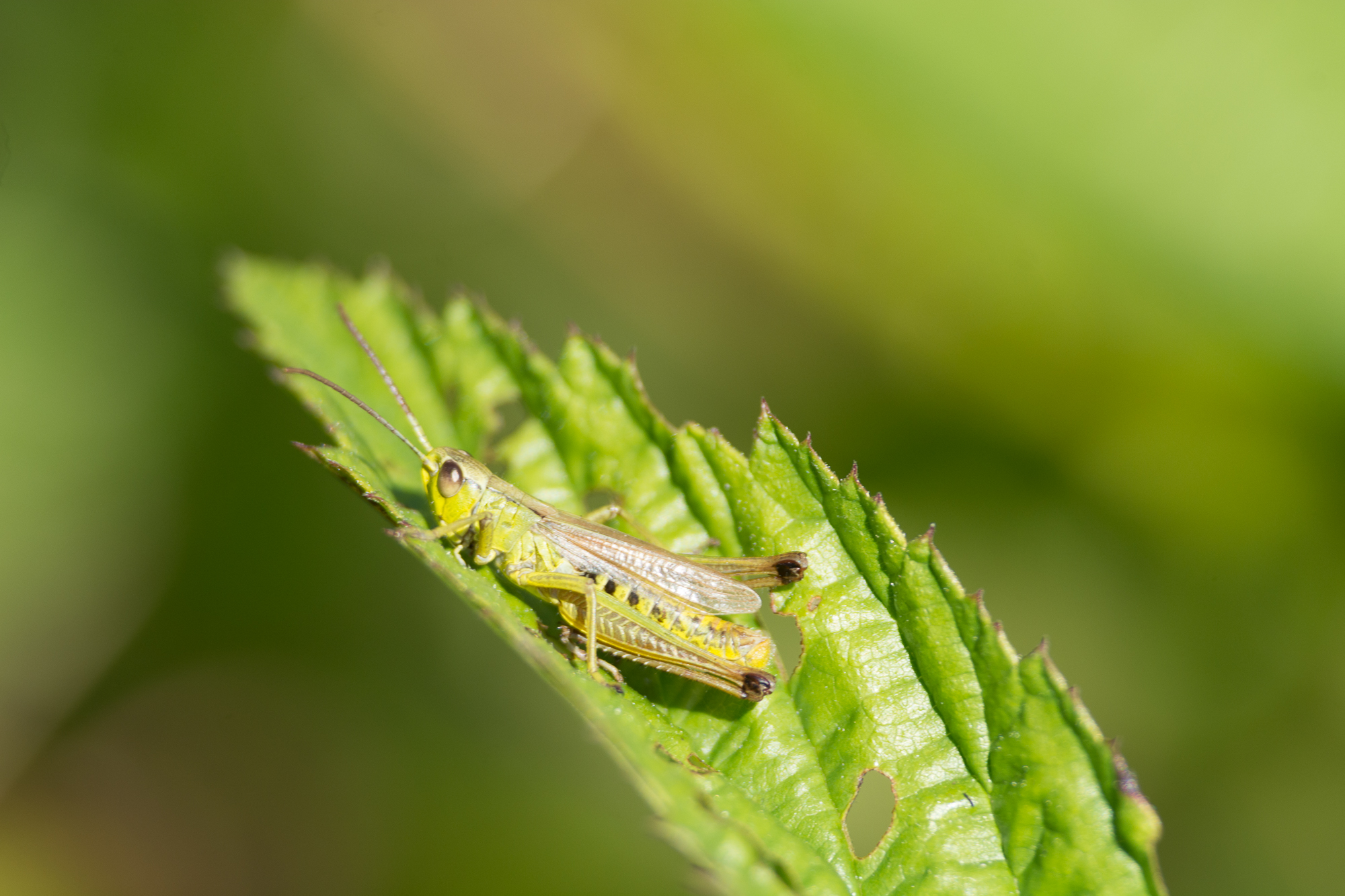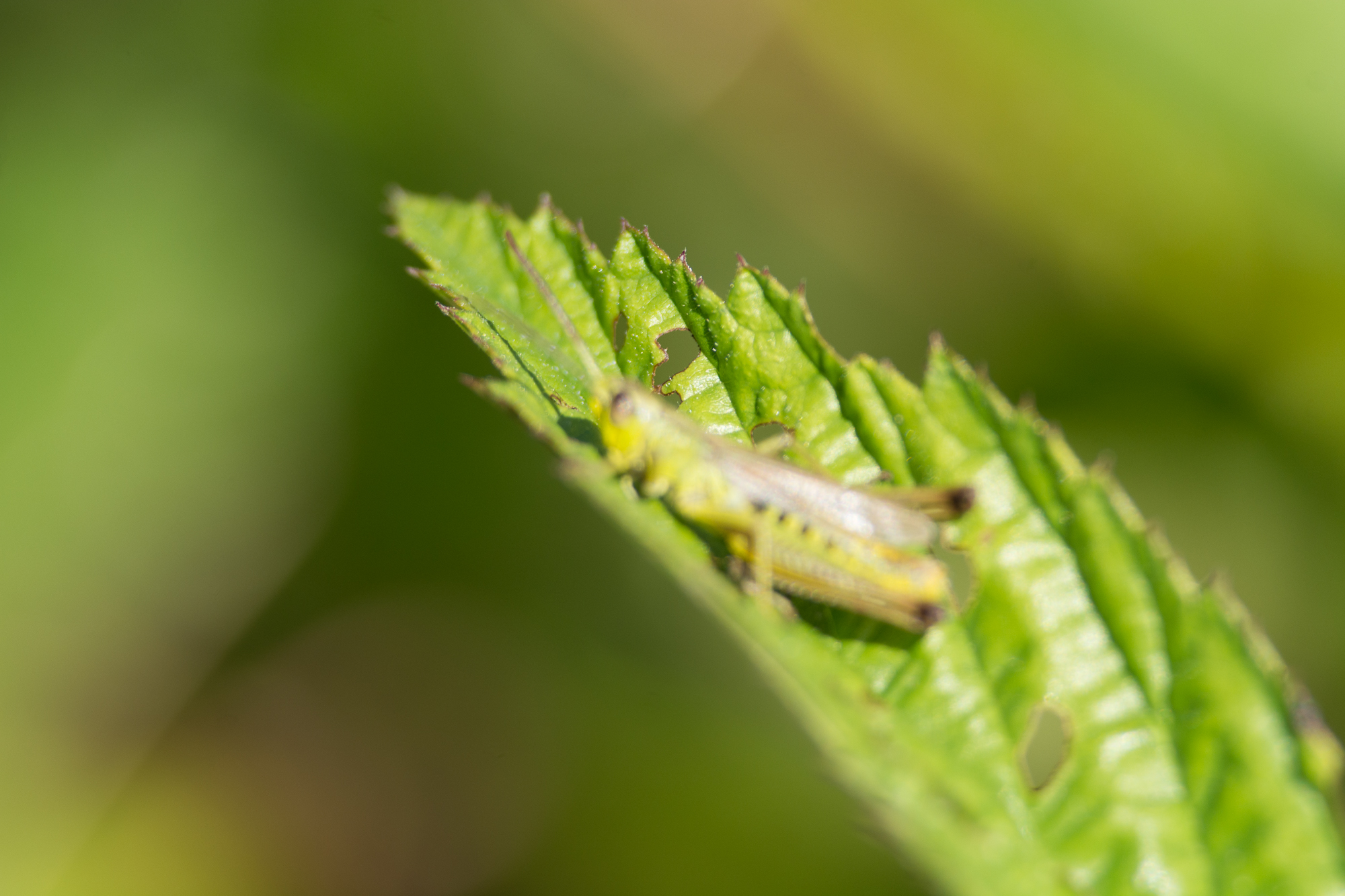As you know, I love landscapes. But it's more than that, I love nature, in general. That includes landscapes, forests, the sea, and animals both big and small. Sure, mosquitoes are annoying, but they are beautiful at the same time. A few years ago I decided to splurge on a new piece of glass, a 300mm f4. The lens was to be exclusively for wildlife; I was pumped to finally get some reach with proper sharpness. And I did manage to get a few shots, before the focusing motor broke and I had to return it. Unfortunately, the shops in Finland didn't have a single replacement (speaks volumes about how awesome this lens is), so I couldn't do anything but look at the few photos I got, longing to be able to do it again.
A big-a** dragonfly on a piece of reed; my pride and joy for a long while. 300mm, at a distance of about 2 meters.
Then, a year ago, I found another one. And I haven't regretted getting it for a single minute since then :)
So, fast forward to last summer. I had gotten a bit more wise in the ways of macro photography (1:1, extension tubes, depth of field, etc.), and had gotten myself a set of extension tubes. For those of you that don't know what they are, extension tubes are rings without glass that you mount between your camera and your lens. What happens is that your lens now focuses closer; depending on your lens, much, much closer. My 300mm focuses, by itself, down to 1.45 meters from the camera. With a 36mm extension tube, I can get that down to well under a meter. However, I can't focus longer than about 5 meters anymore.
Now, why would I do that? One word, magnification. Being a 300mm lens, it already magnifies quite a bit. But with the extension tube, I can get closer to my subject. Much closer.
First try; damselfly on a smaller reed. Bug is 6-7cm in length, distance to camera about 1.5 meters. But I can get closer still...
There we go! Same size bug, but camera is now less than a meter away. Let the damselfly strike a pose, recompose, and..
Boom! My favorite bug shot, ever. The photo is not cropped, at all. The amount of detail is crazy :)
So, what does it take to get these kind of shots? Well, I have to be honest, you will need some specialized gear. To get this close, you will need some sort of macro-like capabilities on your lens. A real macro lens is good, but might not be perfect; the key is working distance. The reason I got these shots of a very skittish bug is the right distance between camera and subject. A normal macro lens has a normal working distance of about 5-20 cm from the front of the lens. Now, you can try poke your lens in the face of the bugs, but be warned, most of them will not stick around. The reason I didn't have a 'real' macro lens was that the magnification from the 300mm focal length in combination with the working distance reduction of the extension tube gave me a working distance of 50-70cm from the front element of the lens; enough not to scare most bugs if you're careful, but close enough to get up close and personal with larger insects.
So, gear aside, what else? Patience. And a LOT of trial and error. As I mentioned, the bugs (especially flyers) are very skittish. You want to make as little movements as possible. Waving yourself around quickly, pointing at leaf after leaf is just a good way to scare your subjects away. Be patient. Just sit among the bugs for a few minutes; you'll soon find a branch or leaf they visit often. Carefully align your camera at that spot, prefocus, and wait. A bug will present itself momentarily.
The next issue you'll run into is depth of field. Working with this amount of magnification, you'll quickly notice how little of your image is sharp. The closer you'll get, the less you'll have in focus. It is completely normal to work with millimeter-thin planes of focus doing macro work. If you take pictures of still subject (say, a flower), you have quite a lot of control over where to place the sharpness. If your subject itself moves (a bee, for instance), you lose much of that control. Pro tip; don't shoot macro when there's any wind.
So, how do you make sure you nail the focus on the eye? There are possibly multiple ways, but I have a preferred method; quantity :) I shoot a lot of frames. A LOT. For the single bee photo above, I took about 50 frames. 3 of them had a sharp head. 1 of them had the bee turned so that you could see it properly. But that was enough.



3 photos out of a few dozen; you can see the depth of field being a pain. What I did was quite simple in the end. Set the camera to manual focus and high fps. Get close and manually focus on the bug (or where the bug will be). When it's time, press down the shutter button and don't let go. Depending on the camera, you'll get anywhere from 3 to 20 frames a second like this. Most people will sway a little when the are hunched and pointing their camera into the bushes. If you don't, it helps if you do it anyway; sway just a few centimeters back and forth while you are taking the pictures. The depth of field is around 5 millimeters in these shots, so a few centimeters is plenty to maximize the chances of getting one in good focus.
Now, I'm not saying that's a perfect solution by any means. But after some practice it is quite fast, and speed is definitely the key when taking photos of something that'll stay in place for 10 seconds or less. Also, the more shots you have, the better the chance to get a keeper (eyes in focus, no motion blur). Just be prepared to delete 97% of your shots after you take a closer look with a computer. With practice, you'll be able to take series of 5-10 shots and almost always nail focus on one of them.
This was a tricky one; the spider was very quick to move itself so that it had turned itself away from the camera. This one isn't in perfect focus, but it was the best I got.
Hot pink was in season.
What'cha lookin' at?
The season to be merry, it seems.
So, what is a 'good' insect shot? Like most photographs, it depends on many things. If you can't capture a moment (which you seldom can with non-humans), it boils down to more technical things. Correctly exposed and sharp eyes are pretty much a must. Having the eye(s) fully visible is good, even better if the bug is turned so that its head is more towards you then away. Lastly, quality of light is important too; many bugs have hard shells that reflect the sunlight, which can present itself as unpleasant highlights. I'd not worry about that too much, though. You are already short on light being close and using a big lens, having direct sunlight can save your exposure more often than ruin it. Look at the second pic in this post; it's not very good compared to the rest, because the aforementioned things.
In the and, a picture is good if there is an interesting element to it. Try getting an interesting place for the bug to sit on that isn't too distracting (e.g. the leaf under the green damselfly above). Try getting an unusual angle. Try finding an unusual insect. Or, if you are lucky, get a moment.
